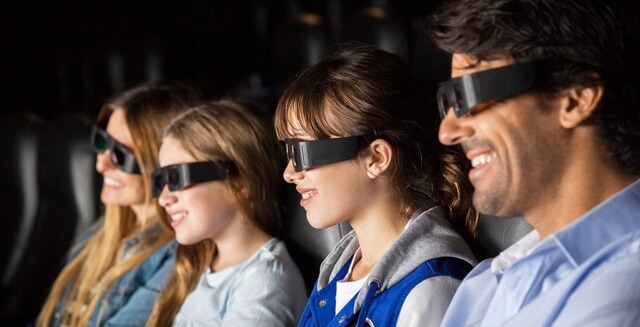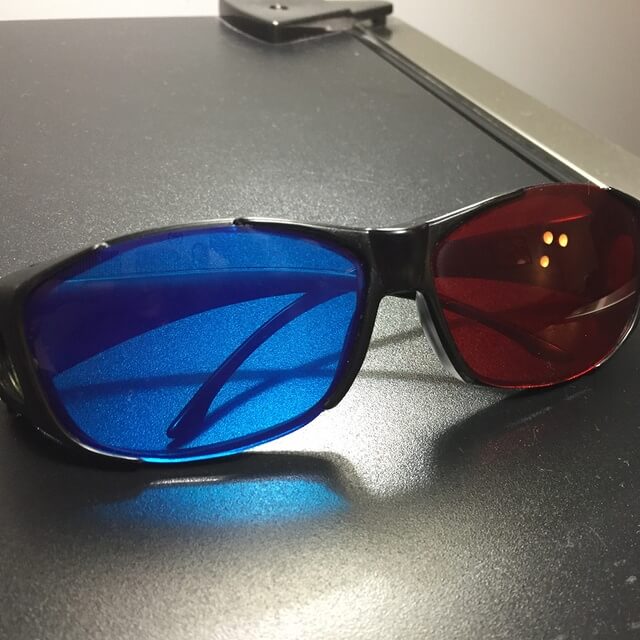
The film industry has always been pushing the limits of technology, either for artistic expression or competitive drive. One of the more controversial technologies of the modern film industry is 3D. When I say 3D, what I really mean is Stereoscopic. You know, that movie you go to where you have to wear those dorky glasses to see things coming out at you. There is a lot of confusion in terminology there, especially for an animator. When I work on a computer to make a “3D” film, it isn’t necessarily stereoscopic. Whenever I talk about a 3D movie, I’m talking about something like Disney’s Zootopia, but when I say stereoscopic, I mean dorky glasses movies. This modern film format, which is the bane to many film-goers, is actually over 100 years old, sort of.
A brief history of those crazy glasses
As early as the 1900’s, filmmakers were experimenting with the 3rd dimension, and how to incorporate it into the medium. The first commercially-released stereoscopic film was in the 1920’s and used those blue and red (actually cyan and red) glasses, called anaglyph. The format didn’t really go anywhere for a long time. However, in the 1950’s it started to make a big comeback. Even Alfred Hitchcock got on the stereo bandwagon with Dial M For Murder (which you can buy right now in 3D Blu-ray). But it wasn’t to last. The popularity faded again, and despite the occasional 3D movie coming out over the coming decades for novelty’s sake, it never caught on again. That is, until the 2000’s.
Technology advanced and stereoscopic got better. As theme parks started to get in 3D attractions using new polarized lens glasses, interest in the format started to spark again. It was in 2004, with the zombie-child movie The Polar Express (you tell me those kids don’t look like The Walking Dead,) that the format began another resurgence. But, it was James Cameron’s blue-people movie Avatar that brought the format into the modern era. Now with 3D releases for almost every major action or animated film, the format has hit a peak, and passed right over the hill.
Are stereoscopic movies here to stay?
Sure the numbers show that stereoscopic movies make money, for the most part, and yet the number of stereoscopic films released every year has begun to dwindle. With only 31 major film releases in stereoscopic this year, it is a far cry from 2011’s 70 stereoscopic films. To add to the dying ember, in 2012 only eight movies were retrofitted with stereoscopic (as in it wasn’t filmed in “3D,” but it was added later in post-production, commonly called post-3D), while 19 of the 31 stereoscopic films released this year are post-3D. Typically these post-3D films are not as impressive and don’t take full advantage of the stereoscopic effect and may be a contributing factor to the demise of the format. So why do it? Because it is a lot cheaper to cheat your 3D look than to film it that way.
The format lives on, but does it have a future? Probably yes, despite what naysayers claim. At least in some form. Whether or not the format makes as much as they like to claim it does is up for debate, but it apparently makes enough to justify making more of them. The technology is getting cheaper and more readily available, so why not keep going? The new VR systems coming out (Vive, Oculus Rift, PlayStation VR) all support 3D formats and most TVs sold today are 3D-ready, meaning they can view stereoscopic content in high quality. This allows more productions the ability to create stereoscopic content now more than ever, from major film releases to video games to YouTube stars.
How it really works
Let me give you a brief overview of the technology, at least on the consumer side. I like to think there are three ways to view 3D content: Directed Light, Filtered Light, and Filtered Color.
Filtered color is the most iconic of these, where you use those red/cyan glasses, called anaglyph. This method blocks one color in your left eye (red), and the opposite color in your right (cyan). The advantage to this is it is cheap and easy to get a 3D effect, but the colors are funky and can give you a headache.
Filtered Light filters the entire spectrum of light, so there are no color problems. This can either be done Actively or Passively. Active light filtering is done through shutter glasses that essentially turn the lenses on and off at incredibly fast speeds, alternating left and right, while synchronized to the film, so your right eye sees the right image, and visa versa. Passive light filtering is easier and more common nowadays, where the lenses are polarized and filter out light oriented in opposing directions. This is currently the standard for theaters.
Directed light is the hardest to explain. Essentially, you want to direct the light to each eye without the aid of glasses, also called Auto-Stereoscopic. The easiest example of this is the Nintendo 3DS, which directs the light to each eye. It is virtually impossible to implement this in a theater, and may be limited to mobile devices for many more years.
All three of these are used today. While it is rare to see anaglyph productions anymore, filmmakers on a budget will use this while editing their projects. It is easy to implement with existing technology, fast, and, most importantly, cheap. So yeah, I’ve spent half my day looking at a screen with red/cyan glasses on lately. It works, more or less.
Yes the trend of seeing films in stereoscopic 3D is fading, despite new films coming out which use the technique, such as Kubo and the Two Strings. However this downswing isn’t necessarily a death knell for the format, merely the passing of a fad in an almost century-old technique. It will stay around for a long time yet. Just as long as they don’t make anymore blue zombie children.

One Response